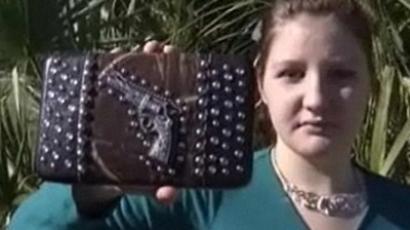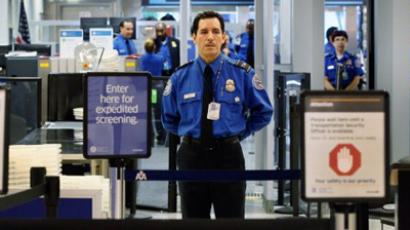TSA ends naked airport scanners contract after years of controversy

The US Transport and Security Administration (TSA) will remove all 174 of OSI Systems Inc. (OSIS)’s Rapiscan body scanners from airports, following serious concerns over their inability to protect the privacy of passengers.
The $5 million contract Rapiscan had with the TSA will come to an end, leading to the removal of the invasive machines from all US airports. The contract has been terminated as a result of the company’s inability to meet TSA requirements that their machines develop software to produce less invasive images of passengers. The need for a speedy adjustment intensified in November 2012, when Wired reported that Rapiscan may have been manipulating the results of tests on integrated privacy software that they were supposed to have been implementing. In a letter quoted by Bloomberg, Rep Mike Rogers (R-AL) claimed that Rapiscan “may have attempted to defraud the government by knowingly manipulating an operational test.” As a result of the outcry that followed these accusations about the then-current software, the TSA ordered the manufacturer to adjust the machines so that an avatar of a miscellaneous body was displayed in place of the individual being searched.Rapiscan indicated that they would not be able to meet the TSA’s demands until 2014. TSA Assistant Administrator Karen Shelton Waters said that it “became clear to TSA they would be unable to meet our timeline.”As early as August 2010, the TSA had required that software be developed to make body scans of airline passengers less revealing, after the administration was criticized for essentially stripping their travellers naked. However, their airport scanners have continued to be a source of controversy – in 2012, a Texas woman was sent through a scanner three times, and told she was ‘cute,’The TSA has been using two companies to conduct the searches, outsourcing to both Rapiscan and L-3 Communications Holdings to produce the machines. While the Rapiscan machines have been utilizing weak X-rays to create what appears to be a naked image of the subject, the machines of L-3 Communications Holdings use radio waves to depict concealed objects on an avatar image on a screen, and will continue to be used by the TSA. The Rapiscan machines will be replaced by 60 units supplied by L-3.














